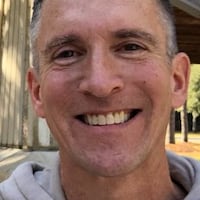Before you send the kids out with rakes and demands to see green grass under the newly fallen leaves. And before you start cutting everything down, piling things up, and shipping things away, take the weekend off, and think about the wildlife and the environment we call home.
The sky is not falling
Leaves on the ground serve a number of purposes. If you want to see more lightning bugs, leave more leaves on the ground. The same goes for a number of critters, from frogs to butterflies to amphibians to small mammals and more.
Naturally, leaves on the ground hold in moisture. While they decompose, they increase the fertility of the soil.
I don’t suggest piling dry leaves next to your house, but if you have to move the leaves off of your lawn, consider moving them to a corner of the yard or as mulch onto garden beds. There, they can serve their natural purpose as food, shelter, and returning nutrients to the soil.
Or if you have too many to move or just don’t want to, run over them with a mulching lawnmower. Your grass will thank you.
I had a neighbor who never raked a leaf, but whose yard was still like a carpet of green, in part because he followed that practice.
Stalks and flower heads
Leave flowers and seedheads to overwinter where you can — that’s the natural process. They’ll provide food deep into the winter for birds and other animals, while also providing cover and some shelter from the elements.
If you have to prune back blackberry shrubs and other shrubs, the bundles of branches make great habitat as well. You can cut back the flowers in the early spring before new growth starts, and everyone is happy.
Planting time
While most people associate spring with the planting season, for Mother Nature, while things might grow in the spring, the “planting” really happens in the fall. In fact, some seeds require a period of cool weather followed by the warmth of spring to germinate, in a process called “cold stratification.”
Milkweed, the only host plant for the Monarch butterfly, and many of our favorite trees, including oaks, maples and walnuts, require cold stratification.
Planting in the fall follows this natural process, where fruits and seeds fall to the ground, and are covered by leaves. (The apple doesn’t fall very far from the tree for a couple of reasons.) If you’re planting or moving established plants, doing so now, before the ground freezes, allows them to establish roots without the stress of growing leaves or drought.
They’ll go through winter and hit the warmth of spring, ready to grow.
Planning for a pollinator or native garden
Planting native plants typically requires getting rid of the invasive species first. That’s a step you can take now. A pile of leaves in the area where you want to reestablish native plants could be a great first step. It will help retain water, send nutrients into the soil while blocking light and preventing new growth from starting.
Likewise, purchasing or collecting native seeds now and planting them after a hard frost but before the ground is frozen can help get everything on track.
If you’re interested in collecting seeds or helping out with local native plants in other ways, there are a couple of events coming up in the area.
Devin Meister is a local outdoors and wildlife enthusiast and has a blog called “Average Guy Outdoors.” He is an Ohio University graduate. Reach him at meister.devin@gmail.com.
MORE INFORMATION
Huffman Prairie Flying Field Habitat Day
Saturday, Oct. 4, 9 a.m. - noon
All ages. Free registration is required to get a headcount for light breakfast, full lunch, beverages and door prizes. A variety of tasks to encourage native plant growth and support biodiversity, including gathering seeds from native plants for overseeding in other areas, targeted removal of invasive species, and assisting with selective herbicide application.
Prairie Seed Collecting - Part of Conservation Kids series
Saturday, Oct. 11, 10 - 11:30 a.m.
AGES: 3-13 | FREE
From the Five Rivers website: “We need seeds to care for our already existing prairies and to help us establish new habitat for pollinators. Join us on a seed-collecting extravaganza to help ensure the future of our biodiversity! Weather dependent.”
metroparks.org/programs-events-finder/?program_number=U94&api=programs&type=program
Natural Gardens
ohionativeplantmonth.org/plant-a-pollinator-garden
nwf.org/Magazines/National-Wildlife/2023/Fall/Gardening/Fall-Gardening-Tips-Pollinators
fws.gov/story/how-build-pollinator-garden
Benefits of Leaving the Leaves
About the Author
